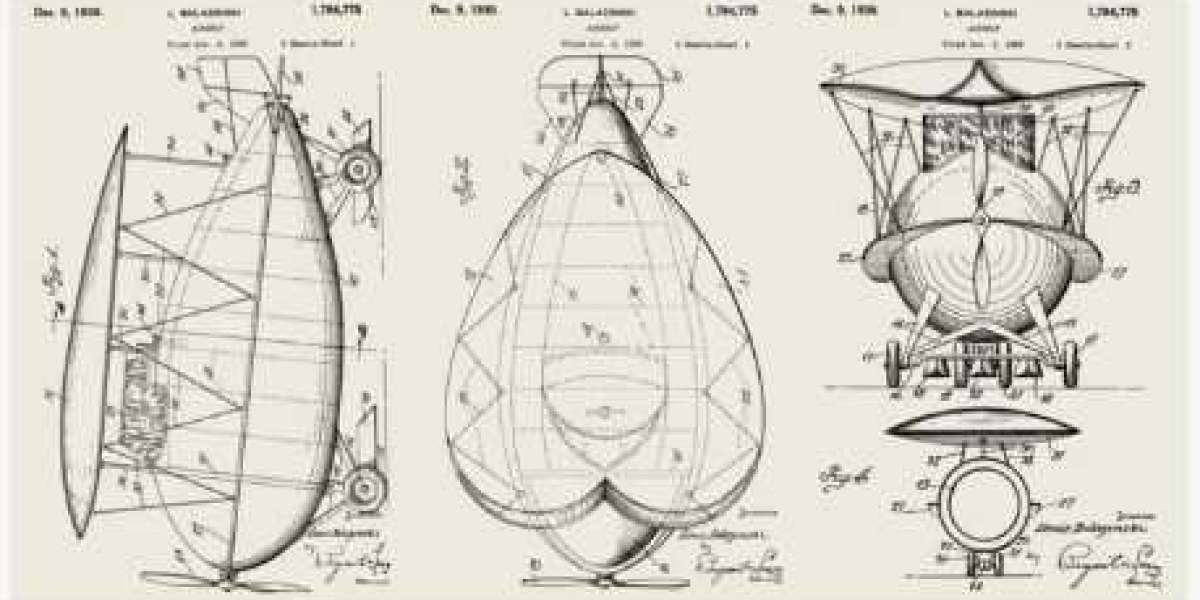In today’s rapidly evolving world of innovation, the term “patent draftsman” may not immediately conjure images of caped crusaders or larger-than-life heroes. Yet, within the intricate realm of intellectual property, these professionals wield a power that is no less transformative. They are the architects of innovation protection, the scribes who craft the legal blueprints safeguarding groundbreaking inventions. In this comprehensive exploration, we will embark on a journey through the fascinating world of patent draftsmanship, shedding light on its profound significance, the diverse skill set it demands, and the intricate steps involved in weaving together a compelling patent application.
The role of a patent draftsman goes far beyond being a mere technical writer. They are the bridge connecting the imaginative genius of inventors to the rigid confines of patent law. A well-drafted patent application isn’t just a legal document; it’s the culmination of countless hours of meticulous research, intricate wording, and an unwavering commitment to protecting innovation. It’s the shield that guards inventors’ intellectual property, enabling them to flourish in a world where ideas are currency.
Understanding the Role of a Patent Draftsman
The role of a patent draftsman is nothing short of pivotal in the world of intellectual property. While their title may not be as commonly recognized as inventors or patent examiners, the work they perform is foundational to the entire patenting process. In this chapter, we will dive deeper into understanding the multifaceted role of a patent draftsman and why their contributions are indispensable.
What is a Patent Draftsman?
At its core, a patent draftsman is a professional responsible for creating the technical and legal documentation required for a patent application. They are the architects of the patent, meticulously translating an inventor’s innovative concept into a legally binding document. This document, known as the patent application, is the foundation upon which intellectual property protection is built.
Bridging the Gap
One of the most significant roles a patent draftsman plays is that of a bridge builder. They stand at the intersection of two vastly different worlds: the inventor’s creative realm and the legal domain of patent law. Inventors are typically experts in their field, driven by a passion for innovation and a deep understanding of their invention. However, they might lack the legal expertise and language precision needed to navigate the complex patenting process effectively.
This is where the patent draftsman shines. They possess the unique ability to understand both the technical intricacies of an invention and the legal requirements of patent law. They act as mediators, translating the inventors’ ideas and concepts into a format that adheres to the strict legal standards of patent applications. In doing so, they ensure that the patent application accurately and comprehensively reflects the invention, increasing the chances of it being granted.
The Importance of a Well-Drafted Patent
A well-drafted patent is the cornerstone of intellectual property protection. It serves as a legally enforceable document that defines the scope and boundaries of an invention’s protection. Without a carefully crafted patent application, an inventor’s groundbreaking idea may be vulnerable to infringement or misappropriation.
A patent draftsman’s expertise becomes evident in the quality of the patent application they produce. A well-drafted patent:
- Ensures Clarity: The language used in patent applications must be precise and unambiguous. Patent drafts people meticulously choose words and phrases to avoid misunderstandings or misinterpretations.
- Defines the Scope: The patent draftsman’s work in crafting patent claims is particularly critical. These claims outline the specific aspects of an invention that are protected. Precision here is vital, as overly broad claims may lead to disputes, while overly narrow claims may limit the invention’s protection.
- Strengthens Enforcement: In the event of infringement, a well-drafted patent can be a powerful tool for enforcement. It provides a clear and legally binding document that defines the inventor’s rights and helps them assert those rights in court if necessary.
- Enhances Market Value: A strong patent can increase the market value of an invention. Companies and investors often assess the quality of patents before considering acquisitions or investments. A well-drafted patent can make an invention more attractive to potential buyers or partners.
Essential Skills for a Patent Draftsman
Becoming a proficient patent draftsman is not merely about mastering a single skill; it’s about honing a diverse set of abilities that bridge the gap between technical expertise and legal precision. In this chapter, we will explore the essential skills required to excel in the role of a patent draftsman.
- Technical Expertise
A solid foundation in the technical field related to the invention is the bedrock of patent draftsmanship. Patent drafts people must comprehend the intricacies of the invention they are working on. This entails:
- Technical Expertise
- Understanding the Invention: Grasping the invention’s technical aspects, its purpose, and its unique features is crucial. This requires the ability to delve into complex technical details and decipher them for patent documentation.
- Collaborating with Inventors: Effective communication with inventors is vital. Patent drafts people must extract comprehensive information from inventors and translate their knowledge into a format suitable for a patent application.
- Staying Updated: Inventions often evolve during the patent drafting process. A draftsman must stay informed about any modifications or improvements and reflect them accurately in the application.
- Legal Acumen
Navigating the intricate landscape of patent law is a fundamental skill for a patent draftsman. This involves:
- Legal Acumen
- Understanding Patent Law: A deep knowledge of patent laws and regulations is essential. This includes understanding patentable subject matter, novelty requirements, and the intricacies of patent claims.
- Compliance: Ensuring that the patent application complies with all legal requirements is non-negotiable. Patent draftspeople must meticulously follow the guidelines set by the relevant patent office.
- Anticipating Legal Challenges: A keen understanding of potential legal challenges or objections that might arise during the examination process is crucial. This enables draftspeople to craft claims and arguments that can withstand scrutiny.
- Language Proficiency
Patent applications are intricate documents that demand clarity and precision in language. Skills related to language and communication include:
- Language Proficiency
- Technical Writing: The ability to write technically accurate and clear descriptions of inventions is paramount. Patent draftspeople must convey complex concepts in a manner that is easily comprehensible to both experts and non-experts.
- Patent Terminology: Familiarity with patent-specific terminology is vital. Patent draftspeople must use standardized language to describe various aspects of the invention.
- Ambiguity Avoidance: Ambiguity can lead to patent disputes or rejections. Patent draftspeople must be vigilant in avoiding vague language or unclear statements.
- Attention to Detail
The devil is in the details when it comes to patent drafting. Even the slightest oversight can have significant consequences. Skills related to attention to detail include:
- Attention to Detail
- Thoroughness: A draftsman must leave no stone unturned when describing the invention. Every aspect, no matter how seemingly minor, should be included.
- Error Prevention: Checking and rechecking the patent application for errors in grammar, formatting, or content is crucial. Any mistakes can delay the application process or weaken its enforceability.
- Consistency: Maintaining consistency in language, terminology, and formatting throughout the application ensures clarity and professionalism.
- Research Skills
In-depth research is a cornerstone of effective patent drafting. Patent draftspeople must:
- Research Skills
- Conduct Prior Art Searches: Identifying existing patents, publications, or inventions similar to the one being patented is essential. This helps in crafting claims that are truly novel and non-obvious.
- Stay Informed: Continuous monitoring of developments in the relevant field is vital. This ensures that the patent application remains up-to-date and reflects the latest advancements.
- Problem-Solving Abilities
Patent draftsmen often encounter complex technical and legal challenges. The ability to think critically and find creative solutions is invaluable. This includes:
- Problem-Solving Abilities
- Identifying Patentable Aspects: Recognizing the specific aspects of the invention that can be patented and formulating claims around them.
- Responding to Office Actions: When patent examiners raise objections or requests for clarification, draftspeople must develop persuasive arguments and amendments to overcome these challenges.
The Art of Patent Drafting
Patent drafting is an art as much as it is a science. It’s the intricate process of converting an inventor’s vision into a legally binding document, and it requires finesse, precision, and a deep understanding of both the invention and the intricacies of patent law. In this chapter, we will explore the art of patent drafting, unveiling the steps involved and the nuances that make this craft a critical element in the world of intellectual property protection.
Step 1: Preparing the Invention Disclosure
The journey of patent drafting begins with an in-depth understanding of the invention. This understanding is acquired through extensive discussions with the inventor(s) and a careful review of any materials they provide. The patent draftsman must have the ability to:
- Extract Key Information: Skillfully extract relevant information from inventors, who may be deeply immersed in the technical aspects of their creation.
- Identify Novel Features: Recognize and highlight the unique and novel features of the invention that deserve patent protection.
- Collaborate Effectively: Foster a collaborative relationship with inventors, ensuring that no critical details are overlooked.
Step 2: Conducting a Prior Art Search
Before drafting a patent application, it’s crucial to identify any prior art—existing patents, publications, or inventions—that might be relevant to the invention in question. This step helps in:
- Assessing Patentability: Determining whether the invention meets the requirements for patentability, including novelty and non-obviousness.
- Crafting Unique Claims: Ensuring that the patent application’s claims are distinct from the prior art, making the invention’s protection stronger.
- Anticipating Challenges: Anticipating and addressing potential objections from patent examiners by understanding the existing body of knowledge in the field.
Step 3: Outlining the Patent Specification
The patent specification is the heart of the patent application. It includes detailed descriptions and drawings that illuminate the invention’s intricacies. The draftsman’s role in this step involves:
- Structuring the Document: Organizing the specification clearly and coherently, typically comprising sections such as Title, Field of Invention, Background, Summary, Detailed Description, Drawings, and Claims.
- Detailing the Invention: Providing a comprehensive and precise description of the invention, including how it works, its components, and any variations or embodiments.
- Creating Visual Aids: Incorporating drawings, diagrams, and figures to visually illustrate the invention, enhancing the clarity of the document.
Step 4: Crafting the Patent Claims
Perhaps the most critical aspect of patent drafting is crafting the patent claims. Claims define the scope of protection an invention enjoys. The draftsman must:
- Formulate Precise Claims: Craft claims that are not overly broad or narrow but precisely capture the inventive aspects.
- Use Legal Language: Employ specific patent terminology and legal language to define the boundaries of the invention.
- Include Multiple Dependent Claims: Provide a hierarchy of claims, with broader independent claims and more specific dependent claims, to ensure comprehensive protection.
- Anticipate Infringement: Anticipate potential infringements and draft claims that encompass these scenarios without ambiguity.
Step 5: The Art of Language and Style
Throughout the patent drafting process, language and style play a crucial role:
- Clarity and Precision: Use clear, concise, and precise language. Avoid ambiguity or unnecessary technical jargon.
- Consistency: Maintain consistency in terminology and formatting throughout the document.
- Eloquence: Craft the patent application in a manner that is not only legally sound but also persuasive, enhancing the chances of approval.
- Anticipating Challenges: Think ahead to potential objections or challenges that might arise during examination, and address them proactively.
Step 6: Review and Revision
A well-drafted patent application undergoes rigorous review and revision:
- Proofreading: Scrutinize the document for errors in grammar, spelling, and formatting.
- Legal Review: Collaborate with patent attorneys or legal experts to ensure compliance with patent laws and regulations.
- Inventor Feedback: Share drafts with the inventor(s) for their input and review.
- Continuous Improvement: Be open to feedback and iterate on the draft to enhance its quality.
Step 7: Filing the Patent Application
Once the patent application is perfected, it’s time to file it with the appropriate patent office. This step involves:
- Completing Forms: Fill out the necessary application forms, including declarations and power of attorney documents.
- Fees and Timelines: Paying the required filing fees and adhering to specific timelines set by the patent office.
- Record Keeping: Maintaining detailed records of the filing process, including dates and correspondence with the patent office.
Step 8: Navigating the Examination Process
After filing, the patent application undergoes examination by a patent examiner. The draftsman may need to:
- Respond to Office Actions: Address any objections or requests for clarification issued by the examiner.
- Amend Claims: Modify claims or specifications if necessary to meet patent office requirements.
- Negotiation: Engage in negotiations with the examiner to secure patent approval.
Step 9: Maintenance and Enforcement
Once a patent is granted, the draftsman’s role continues:
- Maintenance: Ensuring that maintenance fees are paid to keep the patent in force.
- Monitoring for Infringement: Keeping an eye on the market for potential infringements of the patent.
- Enforcement: Taking legal action, if necessary, to protect the patent from infringement.
Pitfalls to Avoid in Patent Drafting
Patent drafting is a complex and meticulous process that demands careful attention to detail and adherence to legal standards. In this chapter, we will explore some common pitfalls that patent draftsmen should avoid to ensure the success and effectiveness of a patent application.
- Lack of Novelty and Inventiveness in Claims
One of the fundamental requirements for obtaining a patent is that the invention must be novel and non-obvious. A common pitfall is failing to adequately demonstrate these aspects in the patent claims. Here’s what to watch out for:
- Lack of Novelty and Inventiveness in Claims
- Overly Broad Claims: Drafting claims that are too broad can lead to rejection or challenges during examination. It’s crucial to strike a balance between protecting the invention’s core and avoiding claims that encompass existing knowledge.
- Inadequate Prior Art Search: Neglecting to conduct a thorough prior art search can result in the inclusion of elements or concepts in the claims that already exist, undermining the novelty requirement.
- Failure to Highlight Inventive Steps: An effective patent application should clearly articulate what sets the invention apart from the prior art. Draftsmen must emphasize the inventive step that makes the invention non-obvious.
- Ambiguity or Overly Broad Language
Clarity is paramount in patent drafting. Vague or overly broad language can create confusion, hinder enforcement, and even lead to patent invalidation:
- Ambiguity or Overly Broad Language
- Ambiguous Terminology: Using terms or phrases that have multiple interpretations can be problematic. Patent claims should be precise and leave no room for doubt.
- Overgeneralization: Overgeneralizing the invention’s scope can weaken the patent. It’s important to be specific and detailed in describing the unique aspects of the invention.
- Inconsistent Language: Inconsistencies in language or terminology within the patent application can raise doubts about the invention’s scope and may lead to difficulties during enforcement.
- Insufficient Description of the Invention
A patent application should provide a comprehensive and clear description of the invention. Failing to do so can result in:
- Insufficient Description of the Invention
- Incomplete Disclosure: Leaving out critical details about how the invention works or variations of it can weaken the patent’s enforceability.
- Difficulty in Enforcement: Inadequate description may make it challenging to assert the patent against potential infringers, as it may be unclear what is and isn’t covered.
- Inadequate Support for Claims: The description must support the claims made in the patent application. If the claims lack sufficient support, they may be rejected during examination.
- Failing to Keep Up with Evolving Patent Laws
Patent laws and regulations are subject to change, and staying informed about these changes is crucial for effective patent drafting:
- Failing to Keep Up with Evolving Patent Laws
- Outdated Language: Using outdated or incorrect legal language in a patent application can lead to errors or omissions that may affect the patent’s validity.
- Inadequate Legal Research: Failing to conduct up-to-date legal research can result in non-compliance with new laws or regulations, potentially jeopardizing the patient’s status.
- Missed Opportunities: Not leveraging recent legal developments or changes in patent law may mean missed opportunities for stronger protection or more effective patent strategies.
- Neglecting International Considerations
In a globalized world, inventors often seek patent protection in multiple countries. Neglecting international considerations can be a significant pitfall:
- Neglecting International Considerations
- Lack of Coordination: Failing to coordinate patent applications in different jurisdictions can lead to inconsistencies or conflicts in patent protection.
- Missed Deadlines: Different countries have varying deadlines for filing patent applications. Missing these deadlines can result in the loss of potential protection in key markets.
- Overlooking Regional Differences: Patent laws can vary significantly from one region to another. Draftsmen must be aware of these differences to ensure effective protection.
- Inadequate Collaboration with Inventors and Legal Experts
Effective patent drafting requires close collaboration with inventors and legal experts:
- Inadequate Collaboration with Inventors and Legal Experts
- Miscommunication with Inventors: Failing to extract comprehensive information from inventors or misunderstanding their technical concepts can lead to incomplete or inaccurate patent applications.
- Lack of Legal Input: Draftsmen may not be legal experts. Collaborating with patent attorneys or legal professionals is essential to ensure legal compliance and robust patent claims.
- Failure to Address Office Actions: If office actions or objections are not adequately addressed during an examination, it can lead to patent rejection or weaker protection.
The Patent Application Process
The patent application process is a multi-faceted journey that transforms the meticulously drafted patent application into a legally protected intellectual property asset. In this chapter, we will explore the key steps involved in the patent application process, shedding light on the collaboration with patent attorneys, the critical role of patent examiners, and the journey from filing to granting a patent.
- Collaboration with Patent Attorneys
Once the patent application is drafted, it’s often necessary to collaborate with patent attorneys who specialize in intellectual property law. Their expertise is invaluable in:
- Legal Review: Patent attorneys perform a thorough legal review of the application to ensure it complies with all relevant patent laws and regulations.
- Strategic Guidance: They provide strategic advice on the best approach to secure intellectual property protection, including suggestions for the scope of claims and the selection of appropriate patent offices for filing.
- Legal Representation: In many cases, patent attorneys act as legal representatives during the patent application process, communicating with patent offices on behalf of the inventor or assignee.
- Filing the Patent Application
Filing the patent application is a pivotal step in the process. Here’s what it entails:
- Choosing the Jurisdiction: Deciding where to file the patent application, which can be in a single country or multiple jurisdictions based on business needs and global market considerations.
- Completing Required Forms: Filling out the necessary forms and documents, including the patent specification, claims, and any supporting drawings or diagrams.
- Payment of Fees: Paying the required filing fees, which vary depending on the jurisdiction and the type of patent (e.g., utility patent or design patent).
- Patent Examination
Once the patent application is filed, it undergoes a rigorous examination process by a patent examiner. This process includes:
- Substantive Examination: A thorough review of the patent application to assess its compliance with patent laws, including patentable subject matter, novelty, and non-obviousness.
- Office Actions: Patent examiners may issue office actions, which can include requests for clarification, objections, or rejections of certain claims. These must be addressed by the applicant.
- Responding to Office Actions
Responding to office actions is a critical phase of the patent application process. It involves:
- Legal Analysis: Carefully analyze the examiner’s comments and objections to develop a well-informed response.
- Amending Claims: Modifying claims, specifications, or drawings if necessary to address the examiner’s concerns or objections.
- Negotiation: Engaging in negotiations with the examiner to reach an agreement on the patent claims and ensure that the application meets all legal requirements.
- Granting of the Patent
After successfully addressing all the examiner’s concerns and objections, the patent application is allowed, and the patent is granted. This stage includes:
- Publication: The patent is typically published, making the details of the invention available to the public.
- Issuance of the Patent: Upon payment of the necessary fees and completion of any additional formalities, the patent is officially issued.
- Maintenance Fees: To keep the patent in force, maintenance fees must be paid periodically, typically on an annual or biennial basis.
- Enforcement and Defense
Once the patent is granted, the patent holder has the legal right to enforce and defend their intellectual property:
- Monitoring for Infringement: Continuously monitoring the market for potential infringement of the patent by competitors or other entities.
- Taking Legal Action: If infringement is suspected or detected, the patent holder can take legal action against the infringing parties to protect their intellectual property rights.
- Defending Against Challenges: Being prepared to defend the patent against challenges, such as invalidation attempts or litigation brought by alleged infringers.
- International Considerations
For inventors and businesses seeking global protection, managing and coordinating patent applications in multiple jurisdictions is an ongoing process. It involves:
- Foreign Filings: Filing corresponding patent applications in different countries to secure protection in international markets.
- International Patent Cooperation: Utilizing international patent cooperation agreements, such as the Patent Cooperation Treaty (PCT), to streamline the filing process in multiple countries.
- Regional Differences: Understanding and addressing regional variations in patent laws and regulations to ensure effective protection.
Conclusion
In the realm of intellectual property, patent draftsmanship is a vital art form that bridges the worlds of innovation and law, transforming visionary ideas into legally protected assets. As we conclude our journey through the intricate process of patent drafting and application, we have gained a deeper appreciation for the essential role played by patent draftsmen and the multifaceted nature of their craft.
We have explored the potential pitfalls that can derail the patent drafting process, from ambiguity and inadequate description to overlooking international considerations and failing to stay updated with evolving patent laws. Avoiding these pitfalls is essential to crafting patent applications that stand the test of time.
The patent application process itself is a meticulously orchestrated sequence of events, involving collaboration with patent attorneys, examination by patent offices, and, ultimately, the granting of patents. This process, while complex, is a testament to human ingenuity and dedication to safeguarding innovation on a global scale.








